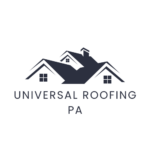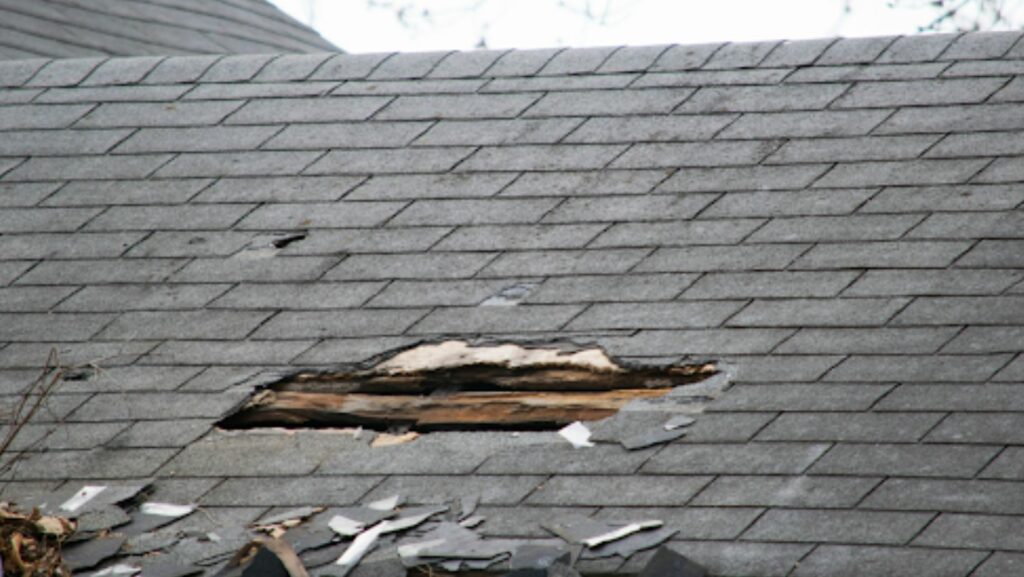Most renters don’t think about their roofs until something goes wrong. Roof damage can take you by surprise, especially one day when you’re enjoying your morning coffee and the next when you suddenly notice a mysterious water stain on your ceiling. Roof damage isn’t just a landlord’s problem; you, as a renter, must also spot the warning signs early. A small leak or a few missing shingles might not seem like a big deal to you, but if left unattended, they can lead to expensive repairs, mold problems, or more issues that threaten your safety. This is why it’s important to spot roof damage on time before it gets serious. But how do you know if your roof is damaged? Continue reading as we discuss how you can spot roof damage and other valuable information.
4 Common Signs of Roof Damage
Cracked or Missing Shingles
Schedule a property inspection for roof damage before it gets too bad because the roof protects everything inside it from extreme weather and all kinds of things. The most common signs of roof damage are missing or broken shingles. From damaged shingles, leaks from water damage may result in water seeping through your roof.

Hire a proactive Philadelphia rental property manager to schedule seasonal roof inspections and address potential damage immediately.
Look for any indications of shingle damage on your roof, particularly after storms or strong winds. It’s great to have your roof inspected as soon as possible if you see any problems.
Water Stains on the Ceiling and Walls
Picture this: You’re just chilling on your couch when, all of a sudden, you notice a really weird stain across the ceiling. At first, you trick yourself into believing it’s just a shadow before you see it expand a bit larger. That is a red flag on your ceiling, an adverse one. One should always be wary; landlords, in particular, need to get into the habit of watching out for signs of roof damage and leaking to avoid an expensive repair bill.
Perhaps the most obvious sign of a roof in distress is the water stain found on ceilings or walls. Light brown or yellowish spots tend to maximize before getting darker. Water seeping makes its way inside and well where it really shouldn’t be, contrary to the weeping of the roof. Ignoring that seemingly harmless stain may lead to a great deal of structural damage, ceiling sagging, or even mold growth in due time.
If you spot any stain, you shouldn’t wait before reporting it. Also, you might have to check for other signs like damp smells, peeling paint, or even bulging drywall. Most importantly, you should notify your landlord as soon as possible. The sooner it’s fixed, the less damage and stress you’ll have to deal with.
Mold
One of the things you don’t want to see in your house is mold. It starts with a small black patch on the ceiling or a musty odor in a corner. However, it quickly spreads, slinking across walls and giving your room a musty, damp feel.
Your roof may be the cause of mold growth. Leaky roofs provide the perfect conditions for mold growth because they are damp, dark, and undisturbed. You shouldn’t ignore discoloration on your walls or ceiling, peeling paint, or a lingering mildew odor.
Mold can cause respiratory problems and allergies, posing a serious health risk. If you see any signs, act quickly. Report it to your landlord, check for leaks, and have it repaired before a small patch becomes a major issue.
Roof Leaks
Roof leaks are certainly the most noticeable sign of roof problems. They should never be ignored, whether you observe drips, water collecting, or wet areas within your house.
Roof leaks indicate that water has gotten past your roof’s protective layers and, if left unchecked, can result in serious damage. Regular inspections should be planned, and leaks should be quickly sealed as soon as they are discovered.
How Do You Differentiate Normal Wear And Tear vs Signs Of Roof Damage?
Roofs age, just like many things. An occasional faded shingle or a little discoloration is normal after some time. However, a sagging ceiling, water stains, or a little mold creeping up your walls? Now that’s a different story.
Normal wear occurs slowly over time: a little bit of fading from the sun or mild cracking in the shingles after a while. Damage, on the other hand, usually means leaks, drafts, or missing shingles following a storm.

One of the major distinctions is that normal wear and tear does not presently place your home in any danger, while damage does. In case of uncertainty, look for signs of leakage because this is where problems begin to manifest.
Documenting Roof Damage for Your Landlords
When you find roof damage, you don’t want to take things lightly; rather, document that roof damage. A problem with a leaking ceiling could be costly in the future, and you will not want to be held liable for something that is beyond your control.
You should start with good photographs. Pictures of the damage are water stains, mold, missing shingles, or anything funny. Note when and where the leaking occurs, followed by sending an email to the landlord detailing the problem with the attached photographs.
Be polite but assertive: A line as simple as this: “Hey, I found a leak in my ceiling near the window, with a couple of pictures attached. Please, let us check it out before it gets bigger” will work miracles. Keeping records will exonerate you from liability and ensure that such issues are taken care of before they manifest larger headaches for you and your landlord.
Conclusion
A roof is one of the most crucial parts of a home. It should always be in good condition to protect you and your family. If you see some of the above-mentioned warning signs, then it is time for a professional to check your roof to find out if any repairs or replacements are required. Don’t allow bigger issues to arise; take care of problems as soon as they arise, and ensure that your roof will still provide reliable protection.

